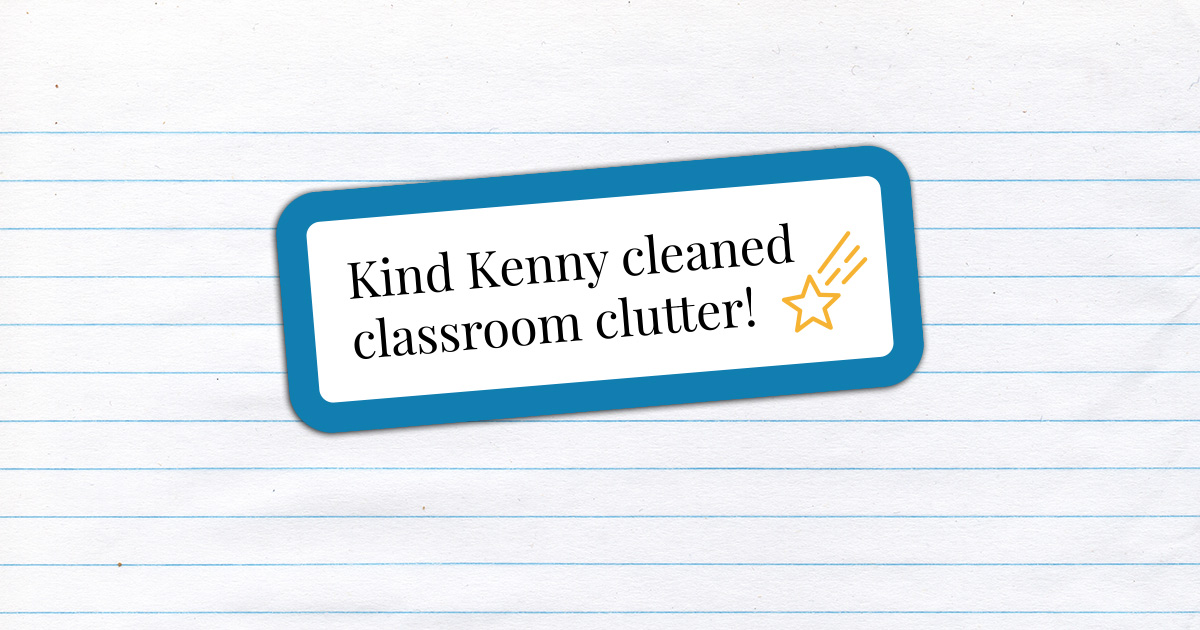
I remember when I first started teaching, and I would pick up the phone to call students’ homes. I not only could hear the trepidation in the parents’ voices, but I could feel them on the other end bracing for bad news: what their child had done wrong, how their child hadn’t met expectations, or why their child was in trouble. It was a teachable moment early in my career that I always needed to start with the good. Even the most challenging student is praiseworthy and I discovered it was part of my job to identify these strengths. And it actually went beyond just identifying. How could I leverage those strengths, build upon, and extol them? Those seeds needed to be nurtured in the name of individualized learning and growth.
Now, stick with me (no pun intended) as I’m shifting gears a bit… Another early a-ha was the power of stickers. Truly! It didn’t matter the age, as proven by my middle schoolers, elementary students, and the loads of teachers during PD. Stickers are not only nostalgic reminders of childhood happiness (except when I stuck them to my childhood bedroom wall — not advisable) but they are tangible expressions. I’m not sure whom I begged, borrowed, and stole the idea from, but Avery labels — the packs you can purchase online or from any office supply store — are easy to format into customizable stickers.
I used Avery address labels repeatedly in my classroom (no brand affiliation but Avery is turnkey to integrate with both Microsoft Word and Google Sheets):
- I’d print out several sheets containing my students’ names for labeling purposes at the beginning of the year: cubbies, pencil boxes, textbooks, folders, etc.
- I’d print out labels with my name and phone number for field trips in case anyone got lost so they could point to my contact information through their tears.
- And — here’s where I’ll connect feedback to stickers — I used them repeatedly to recognize my moments of gratitude.
As a classroom teacher, you’ve probably found a way to acknowledge and reward good behavior versus focusing on and highlighting the negative behaviors as part of the eternal quest for classroom management. Some teachers use points, tickets, or prize bins, all while knowing that the less extrinsic and more intrinsic the motivation, the more ingrained the behavior can become.
Stickers are a great way to speak to that intrinsic motivation and recognize positive student behavior. Not only is it a concrete acknowledgment, but it is public — one that can be seen by other students, teachers, and family members. Stickers are not just tokens; they are badges of honor.
Plus stickers are easy to customize! You can add a child’s name (never underestimate the power of a name). Additionally, you can vary the format of the font size and style. And it is relatively easy to add emoji-like symbols or small .png images to the labels as well.
Here are the straightforward steps to creating printable stickers on Avery labels:
- AVERY DESIGN & PRINT ONLINE: Most straightforward way to design Avery labels — just don’t forget to save as a PDF for reprinting.
- MICROSOFT WORD
- GOOGLE: Looks like they may be retiring this function soon, but you can import spreadsheets by installing an “Add-on” for “Avery Label Merge.”
And do remember that the “little” moments are often the most praise-worthy. How might you call out the expected, the typical, and the everyday? How might you praise the way someone dove right into work in the morning, followed directions without reminders, or came to the aid of another student? These small moments are the ones that help a classroom run like a well-oiled machine. And often those who follow the rules consistently are the ones who are underrecognized. So in this season of gratitude, consider the ways you can use these stickers to fill your classroom with thanks and praise.
Darri Stephens is a former member of Teach for America and a seasoned educator, with more than 10 years’ experience in Los Angeles and New York City public schools. She’s a published author, who has also worked for education-focused media companies including Nickelodeon, IMAX, EdSurge, and Discovery Education. With master’s degrees in education from both Harvard and Stanford, she’s passionate about creative curriculum development that pushes boundaries, especially considering the influx of today’s technologies. Her most recent positions as Senior Director of Content at Common Sense and Director of Education at Wonder Workshop underscore her love of instructional design, writing, and the ever-changing edtech world — so much so that she has now founded her own content consulting agency, Darrow Ink.

